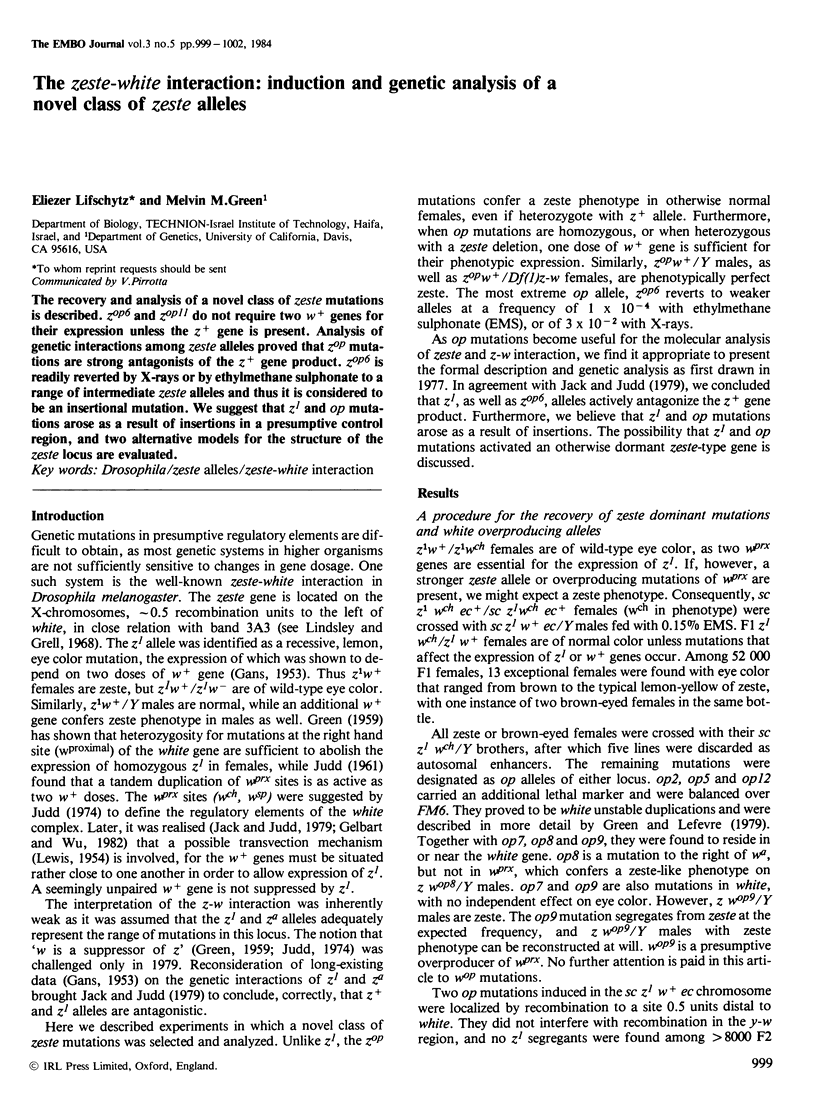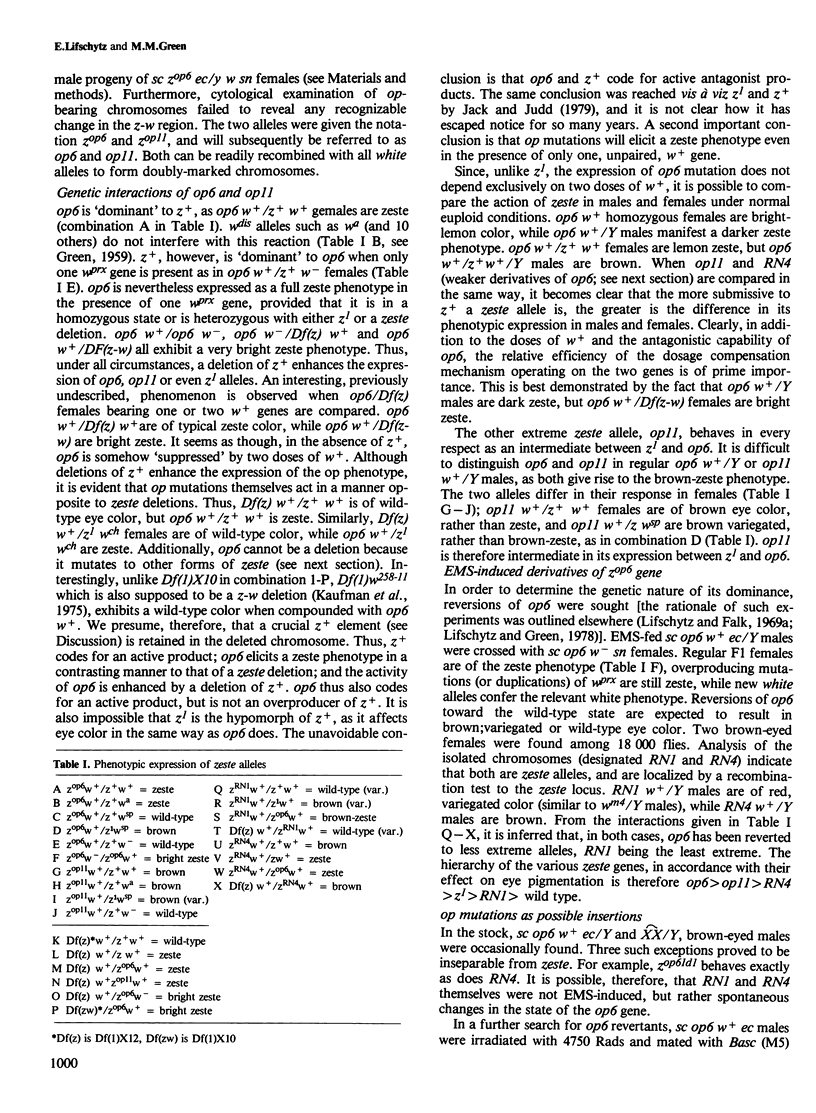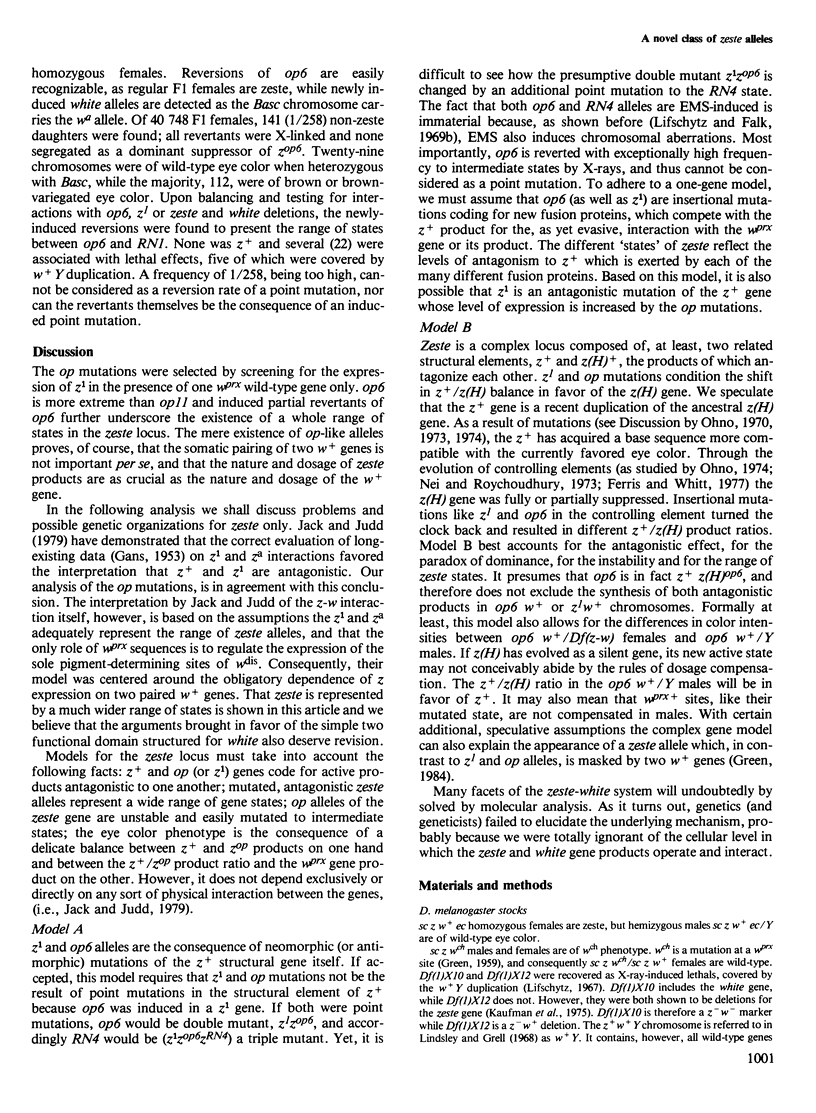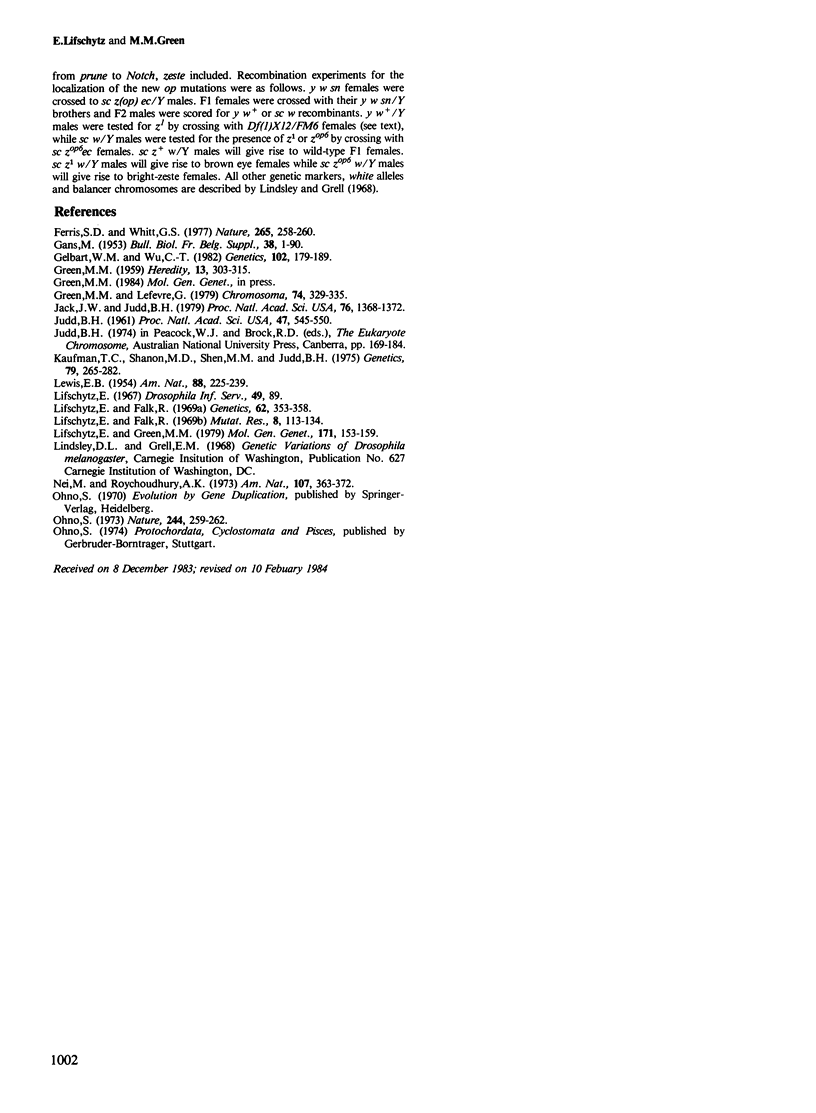Abstract
The recovery and analysis of a novel class of zeste mutations is described. zop6 and zop11 do not require two w+ genes for their expression unless the z+ gene is present. Analysis of genetic interactions among zeste alleles proved that zop mutations are strong antagonists of the z+ gene product. zop6 is readily reverted by X-rays or by ethylmethane sulphonate to a range of intermediate zeste alleles and thus it is considered to be an insertional mutation. We suggest that z1 and op mutations arose as a result of insertions in a presumptive control region, and two alternative models for the structure of the zeste locus are evaluated.
Keywords: Drosophila, zeste alleles, zeste-white interaction
Full text
PDF



Selected References
These references are in PubMed. This may not be the complete list of references from this article.
- Ferris S. D., Whitt G. S. Loss of duplicate gene expression after polyploidisation. Nature. 1977 Jan 20;265(5591):258–260. doi: 10.1038/265258a0. [DOI] [PubMed] [Google Scholar]
- Gelbart W. M., Wu C. T. Interactions of zeste mutations with loci exhibiting transvection effects in Drosophila melanogaster. Genetics. 1982 Oct;102(2):179–189. doi: 10.1093/genetics/102.2.179. [DOI] [PMC free article] [PubMed] [Google Scholar]
- Green M. M., Lefevre G., Jr Genetic instability in Drosophila melanogaster: tandem duplications as monitors of intrastrand exchange. Chromosoma. 1979 Oct 1;74(3):329–335. doi: 10.1007/BF01190747. [DOI] [PubMed] [Google Scholar]
- JUDD B. H. Formation of duplication-deficiency products by asymmetrical exchange within a complex locus of Drosophila melanogaster. Proc Natl Acad Sci U S A. 1961 Apr 15;47:545–550. doi: 10.1073/pnas.47.4.545. [DOI] [PMC free article] [PubMed] [Google Scholar]
- Jack J. W., Judd B. H. Allelic pairing and gene regulation: A model for the zeste-white interaction in Drosophila melanogaster. Proc Natl Acad Sci U S A. 1979 Mar;76(3):1368–1372. doi: 10.1073/pnas.76.3.1368. [DOI] [PMC free article] [PubMed] [Google Scholar]
- Kaufman T. C., Shannon M. P., Shen M. W., Judd B. H. A revision of the cytology and ontogeny of several deficiencies in the 3A1-3C6 region of the X chromosome of Drosophila melanogaster. Genetics. 1975 Feb;79(2):265–282. doi: 10.1093/genetics/79.2.265. [DOI] [PMC free article] [PubMed] [Google Scholar]
- Lifschytz E., Falk R. A genetic analysis of the killer-prune (K-pn) locus of Drosophila melanogaster. Genetics. 1969 Jun;62(2):353–358. doi: 10.1093/genetics/62.2.353. [DOI] [PMC free article] [PubMed] [Google Scholar]
- Lifschytz E., Green M. M. Genetic identification of dominant overproducing mutations: the Beadex gene. Mol Gen Genet. 1979 Mar 20;171(2):153–159. doi: 10.1007/BF00270001. [DOI] [PubMed] [Google Scholar]
- Ono S. Ancient linkage groups and frozen accidents. Nature. 1973 Aug 3;244(5414):259–262. doi: 10.1038/244259a0. [DOI] [PubMed] [Google Scholar]


